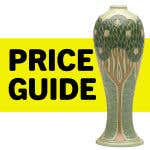Unpacking the History of the Mighty Lunch Box
Just in time for the new school year, we take a look at how television and the emerging pop culture influence transformed the humble, working-man’s lunch box into a staple of American school children cool.
Like many cultural phenomena in mid-century America, the lunch box owes its popularity to television.
Until the 1950s and the advent TV’s influence on pop culture, the lunch box belonged to the working class. The plain, unadulterated metal-dome lunch box was essentially blue-collar, the perfect utilitarian utensil. It carried food for hard-working people and that was it. If anyone gave thought to the lunch box it was only in terms of what was in it.
That all changed when Aladdin Industries manufactured the first children’s lunch box based on a TV show: Hopalong Cassidy. Debuting in time for back-to-school 1950, 600,000 Hopalong Cassidy lunch boxes were produced, selling for $2.39.
Suddenly and incomprehensibly, the lunch box was fun. Your favorite cowboy would be going to school with you. The era of lunch box as personal statement had begun. Goodbye blue-collar staple; Hello school-kid fixture.
Although the “Hoppy” lunch boxes weren’t the first licensed effort – the first such lunch box was a Mickey Mouse number released in 1935 – they were the most influential.
The lunch box market shifted almost immediately from rather bland black versions for workers to brightly colored and abundantly fun lunch mates for school kids everywhere.
In 1953, American Thermos, Aladdin’s chief competitor, introduced the Roy Rogers box in full-color lithography. Aladdin countered with a full-color Hopalong Cassidy lunch box in 1954. And with that, the lunch box era had officially begun – as did the lunch box war between Aladdin and American Thermos, with the occasional challenge from the likes of Adco Liberty, Ohio Art and Okay Industries.
Metal lunch boxes dominated the school lunch scene in the 1950s, ’60s and ’70s with such licensed offerings as Superman, Bullwinkle & Rocky and Star Wars.
At one time, collector demand for classic lunch boxes was insatiable, with a 1954 Superman lunch box (Universal) selling for $19,250 at auction. While values for metal lunch boxes have cooled considerably from those halcyon days, lunch boxes are still popular items to collect.
In 1971, a concerned group of parents argued metal lunch boxes could be used as weapons in schoolyard tussles. Their concern led to new safety legislation. By 1986, Aladdin and American Thermos were producing only plastic boxes.
With few exceptions, lunch boxes today are made of vinyl and are far better insulated than their metal forefathers, keeping lunches fresher longer.
Unfortunately, what was gained in refrigeration efficiency was lost, ironically enough, in cool. The vinyl box simply couldn’t compete with the warmth felt for the classic metal lunch box. And thus, a heavy metal era came to a chilly end.
You may also enjoy:
Paul Kennedy is Editorial Director of the Collectibles Group at AIM Media. He enjoys Mid-century design, photography, vintage movie posters and people with a good story to share. Kennedy has more than twenty-five years of experience in the antiques and collectibles field, including book publishing. Reach him at PKennedy@aimmedia.com.
